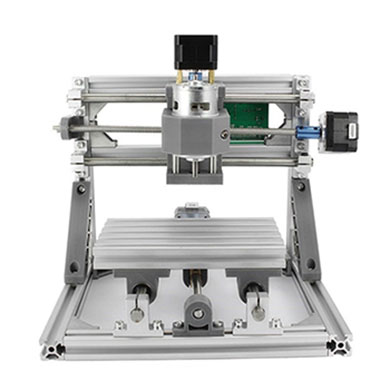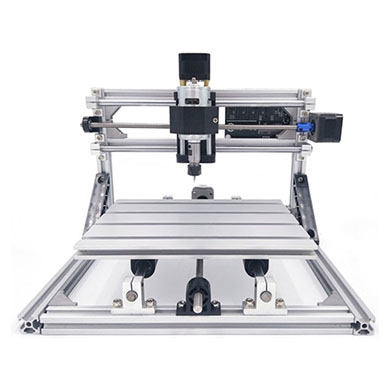Laser engraving machine, as the name implies, is an advanced equipment that uses laser to engrave materials. Laser engraving machines are different from mechanical engraving machines and other traditional manual engraving methods. Mechanical engraving machines use mechanical means, such as diamonds and other extremely hard materials to engrave other things.


The laser engraving machine can improve the efficiency of engraving, make the surface of the engraved place smooth and round, quickly reduce the temperature of the non-metallic material to be engraved, and reduce the deformation and internal stress of the engraved object. According to the different laser source can be divided into CO2 non-metal laser engraving machine and optical fiber metal engraving machine.
Construction:
A laser engraving machine includes upper shell, base, transmission device, pen seat, focusing rod, lifting mechanism, control valve, beam guide device and other components. Above the control valve is provided a valve for controlling the suction path by a control rod, and a heat-resistant folding piece is correspondingly arranged on both sides of the engraving platform in the base, and an auxiliary shutter is additionally provided on the engraving platform.

Working Principle:
Laser is a kind of light, like its electroluminescence in nature, it is produced by atomic transition and is caused by spontaneous radiation. Although laser is light, it is obviously different from ordinary light in that laser only relies on spontaneous emission for a very short period of time, and the subsequent process is completely determined by excitation radiation.
Engraving machine has extremely high luminous intensity. The laser has high coherence, high intensity, and high directivity. After the laser is generated by the laser device, it is transmitted by the reflecting mirror and irradiated on the processed object through the focusing mirror, so that the surface of the processed object is subjected to strong thermal energy and the temperature increases sharply. The point is quickly melted or vaporized due to high temperature, and the operation track of the laser head is matched to achieve the purpose of processing.
The moving speed of the laser head is usually expressed in IPS (inch/second). High speed brings high production efficiency. Speed is also used to control the depth of cutting. For a specific laser intensity, the slower the speed, the greater the depth of cutting or engraving. The speed can be adjusted by the panel of the engraving machine, or by the printer driver of the computer.
Spot size. The size of the laser beam spot can be adjusted with lenses with different focal lengths. A lens with a small spot is used for high-resolution engraving. Lens with a large spot is used for lower resolution engraving, but it is the best choice for vector cutting. The standard configuration of the new device is a 2.0-inch lens. The spot size isin the middle, which is suitable for various occasions.
Compared With Other Thermal Cutting Methods:
- The cutting quality is good. Due to the small laser spot, high energy density and fast cutting speed, laser cutting can achieve better cutting quality.
- The cutting speed is fast. The material does not need to be clamped and fixed during laser cutting, which not only saves tooling and fixtures, but also saves auxiliary time for loading and unloading.
- Non-contact cutting. Because there is no contact between the torch and the workpiece during laser cutting, there is no tool wear. To process parts of different shapes, you only need to change the output parameters of the laser. The laser cutting process has low noise, low vibration and zero pollution.
- There are many types of cutting materials. Compared with oxyacetylene cutting and plasma cutting, there are many types of laser cutting materials, including metal, non-metal, metal-based and non-metal-based composite materials, leather, wood, and fiber. But for different materials, due to their own thermophysical properties and different absorption rates for lasers, they show different laser cutting adaptability.
Laser Engraving Machine Installation Steps:
Position. The engraving machine should be placed in a ventilated and dry place, closing to the grounding wire. After debugging the machine, try not to move the machine, or readjust it.
Unpack the box. After opening the packing box, first check whether the laser tube is damaged, and then check the appearance of the whole machine. Finally, check whether the accessories are complete.
Installation. Installing the base frame, gantry, Z-axis steeper motor, fixed plate. And then connect all parts.

